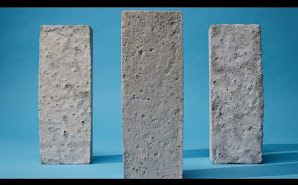zero-carbon cement:
Seratech, a London-based startup, has developed a method for creating carbon-neutral concrete. They replace up to 40% of the cement content with a specific type of silica made from captured industrial emissions and the carbon-absorbing mineral olivine. This innovative approach utilizes CO2 from industrial emissions and the abundant mineral olivine, making it a scalable and low-cost alternative.
Biogenic Limestone by Minus Materials:
Researchers at the University of Colorado in Boulder have invented a method to produce cement using limestone grown by algae through photosynthesis, rather than extracted from the earth. This "biogenic limestone" releases only the carbon that the microalgae absorbed from the atmosphere during its growth. Therefore, the process can potentially be carbon neutral or even carbon negative.
Sublime Systems' Electrochemical Process:
Sublime Systems, a company based in Massachusetts, has created an electrochemical process for cement production that eliminates the need for traditional high-temperature kilns. Instead of heating limestone, this method uses electrical currents and water to induce a chemical reaction that produces cement without emitting carbon. Notably, this process has undergone key certification, confirming it meets strength and durability standards for practical applications.
Concrete and Steel Recycling by Cambridge Researchers:
Researchers at Cambridge have developed a method that recycles old concrete and steel simultaneously within steel-processing furnaces. This process purifies iron and produces "reactivated cement" as a byproduct. When powered by renewable energy, this approach can potentially yield completely carbon-zero cement.
Low Carbon Concrete Recipes by ResourceFull:
ResourceFull provides custom, sustainable low carbon concrete recipes that can reduce carbon impact by up to 90%. These innovative binder systems use well-chosen secondary resources and engineered activators to offer an environmentally friendly alternative with significantly reduced CO2 emissions.
Other Innvotion:
 |
| Benefits of cement |
Several other promising approaches to reduce the carbon footprint of cement production include:
- Use of waste slag from the steel industry
- Fly ash utilization
- Alternative materials like heated clay and calcium sulfoaluminate (CSA) cements
These materials typically offer a reduction in CO2 emissions compared to traditional cement.
These innovations represent a substantial move towards sustainable construction materials and address the urgent need to mitigate the carbon footprint of the construction industry. While some of these technologies are still in the development or scaling-up phases, their potential to transform cement production is evident.
daily test 4: questions
answer








0 Comments